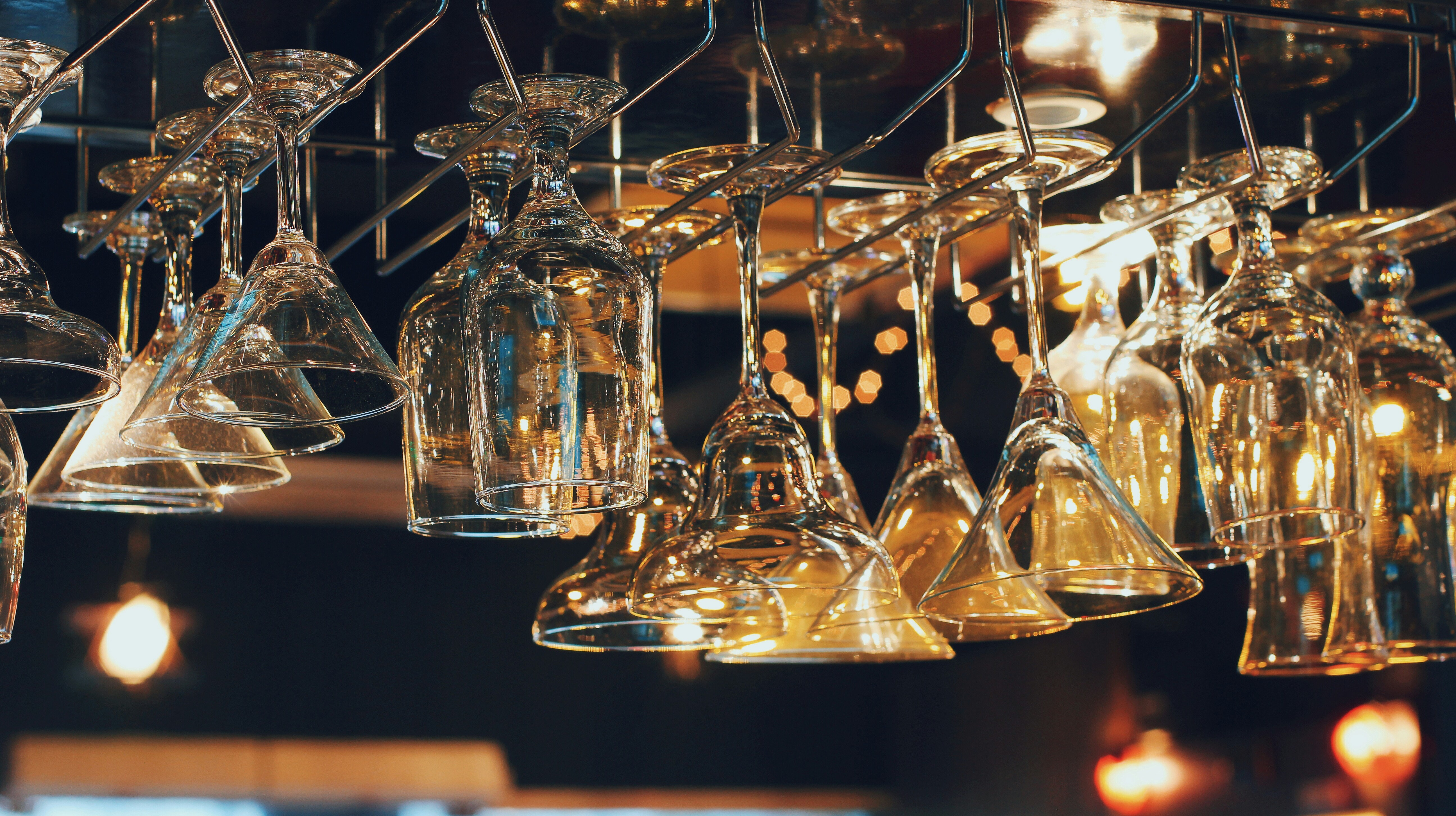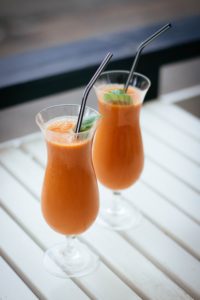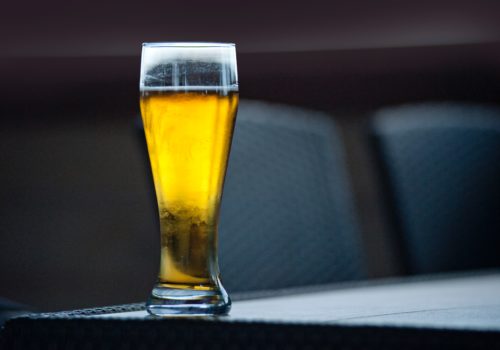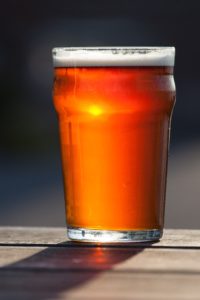Importance of Glassware

Have you ever ordered a bottle of beer and the bartender pours it into a nice glass instead of handing the bottle over to drink straight from the neck? Or been to a fancy restaurant and you order a white wine and someone orders a red and the server brings it in different glasses, what’s going on? Are they trying to rip you off by giving you less wine? The answer is that there are “correct” ways to serve and drink beer, wine, and cocktails. The glassware world is almost as complex as the drinks served within them. Although glassware is not the most important aspect of the drink, using the appropriate wares will show the care and attention to detail that went into the drink.
When you choose your glassware, you need to think about the characteristics of your drink and the appropriate vessel that will suit it. If the drink has high alcohol content, you’ll want a smaller glass so it won’t be overconsumed. If your drink is served cold and without ice, you’ll want something with a stem so that the hand doesn’t warm the drink. If your drink has a lot of bubbles, you’ll want a tall and narrow glass to retain the carbonation. There are many types of glassware available and while it’s not feasible for every establishment to own all the different styles, many vendors will try and follow these guidelines. We’ll be going over some of the most commonly used glasses in the industry and break them down into 3 categories: bar, beer, and wine glasses.
Bar Glasses
Bar glasses are used with liquor and mixed drinks. The glassware focuses on serving size, color and gradient, and the garnishes.
Shot glass: A tiny glass that holds about 1-2oz of straight liquor. This is generally meant for people who are either celebrating or looking to get drunk quickly (or both).
Shooter glass: Slightly larger than a shot glass. The bartender prepares a concoction and you shoot it down in one gulp.
Rocks glass: Used to serve high-quality spirits “on the rocks” or “neat.” Contrary to a shot, you should savor the drink slowly.
Old Fashion glass: Similar to rocks glass but it has a heavier base for muddling ingredients.
Martini glass: Meant for cocktails that are shaken, not stirred. The stem prevents the hand from warming the chilled drink and the cone shape bowl allows the olive garnish to sit beautifully.
Margarita glass: The distinctive wide rim is for salt or sugar rim coating that goes with the drink and you can enjoy it with every sip.
Collins glass: Usually for cocktails topped with soda. The tall and narrow body allows the bubbles to slowly rise up the side of the glass.
Highball glass: Shorter and wider than a Collins glass but often used interchangeably. Usually used for cocktails that are mixed with juices and non-carbonated liquids.
Hurricane glass: Typically used to serve blended drinks. The curvy body gives visual accents to layers.
Snifter glass: This glass has a short stem and wide bottom. You’re supposed to nurse this glass between your fingers on the palm of your hands so that the heat from your palm gently warms up the brandy (oversized armchair, fireplace, and cigars are optional add ons).



Beer Glasses
Beer glasses come in a wide range of shapes and sizes. The main focus of beer glassware is to show off the color, clarity, aroma, and head of the beer.
Pint glass: Most commonly used glass in bars and restaurants because they’re cheap and stackable. They usually hold 16oz which is the standard serving size for beer and they are used to serve most styles of beer except ones with higher ABV or specialty beers. The English pint is slightly larger and holds 20oz.
Beer mugs (tankard): The glass is thick and heavy and there is a handle on the side which helps keep your beer cool for longer. They’re usually associated with German-style beers.
Stein mugs: They’re beer mugs with lids and they’re more decorative and festive than functional. You’ll usually see them at Oktoberfest (and in our offices).
Pilsner glass: This glass is taller and narrower than a pint glass and it’s used for lighter beers with higher carbonation (like a pilsner). Similar to pouring champagne into a flute glass, the narrower body helps retain carbonation.
Weizenbier glass: Similar to the pilsner glass but with a curvy body, this glass is typically used for wheat beer. The wide opening retains great head while the narrow body shows off the beer color.
Goblets: This glass has a wide round bowl and short stem, usually with thicker glass then you would see on a wine glass. There’s a wide range of available sizes but bars usually use 10-12oz glass, because the intended beer is specialized and expensive (like a Lambic) or it has higher ABV (like an Imperial IPA). The wide rim is also great for maintaining head and showing off aroma.
Tulip glass: Similar to a goblet but it has a protruding lip that makes the glass look like a tulip flower. The rim is great for head retention and aroma and complex beers are usually served in this cup.
Snifters: Yes, the snifter we put brandy in. The smaller bowl is perfect for serving heavy and/or high ABV beers with complex aromas.
Tasting glass: 4-6oz glass meant for beer flights or tasters. They’re a great way to sample different types of beer without investing in a full pint. They’re also great for lightweight drinkers who want to participate without regretting it in the morning.



Wine Glasses
Wine glasses are more nuanced than bar glasses and they broadly belong to two categories: red and white. Red wine glasses are usually taller and bigger than white’s because red wines have bolder and more aromatic characteristics. The larger bowl helps the wine breathe and helps soften tannins. White wine glasses are smaller to help maintain a cooler temperature, condense the aroma to the nose, and express more acidity. The shape of the bowl and rim are designed to deliver wine to certain parts of the tongue which changes the wine experience. Crazy, right?
Cabernet glass: This is often used as the standard red wine glass. It has a large bowl and tall stem which allows the wine to breathe due to the larger surface area.
Bordeaux glass: This glass usually has a slightly smaller bowl and a taller bowl than the cabernet glass. The taller bowl lets you swirl the wine and aerate it while softening the tannin notes.
Burgundy glass: This has a wider bowl than Bordeaux to capture the aroma of the wine. It’s great for serving full bodied wine.
Pinot Noir glass: This is the widest bowl in order to maximize the surface area and wine aeration. The rim is also slightly protruding, almost like a tulip.
Chardonnay glass: This is often used as the standard white wine glass. The bowl is smaller than red wine glasses and it’s usually in a U shape with a long stem.
Champagne glass: The bowl is narrower than a chardonnay glass in order to retain the carbonation and let the bubbles slowly rise up.
Dessert wine glass: This has one of the smallest bowls because dessert wine usually have higher alcohol content and are meant to drink in smaller serving.



And there you have it. If you are serious about your favorite drink, you may want to consider investing in a couple of good glasses and give it the royal treatment. Your taste buds and nose will thank you for it and your friends will probably think you’re really cool (or snobby, but at least you’ll have a better drink).
Cheers!
Written by Jan Fogg
Purchasing Assistant


